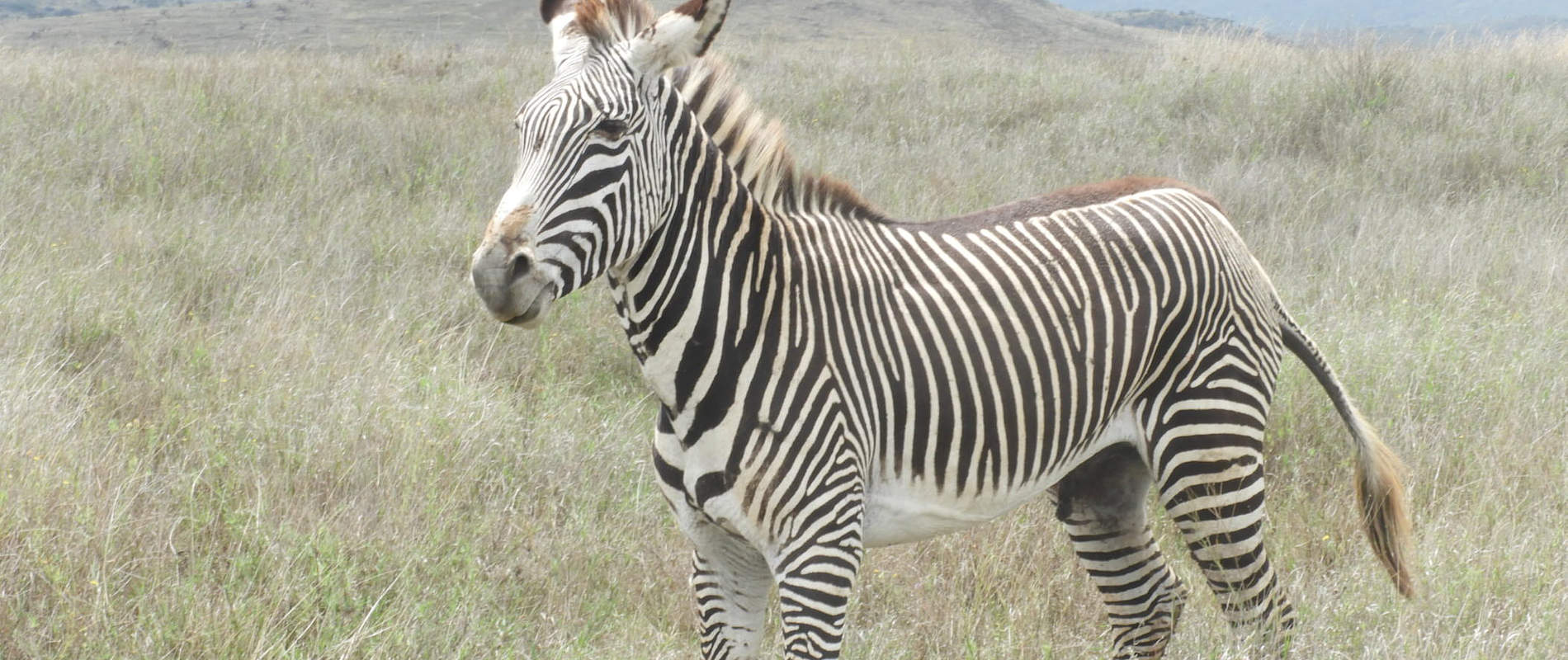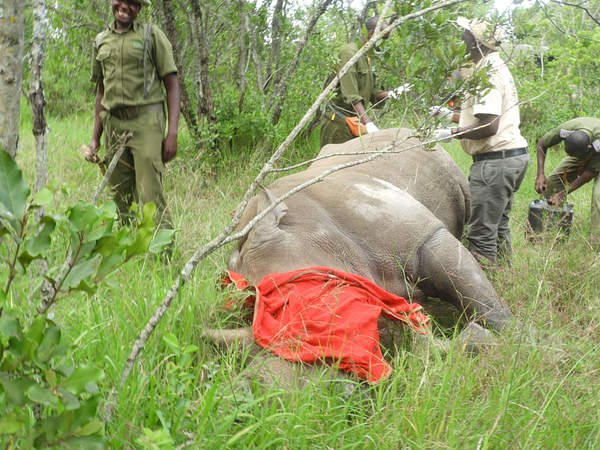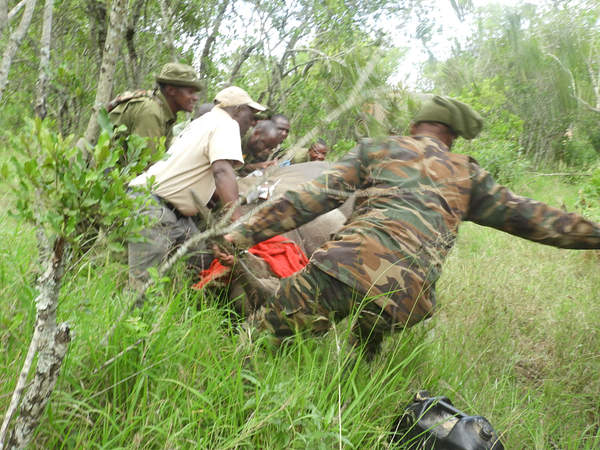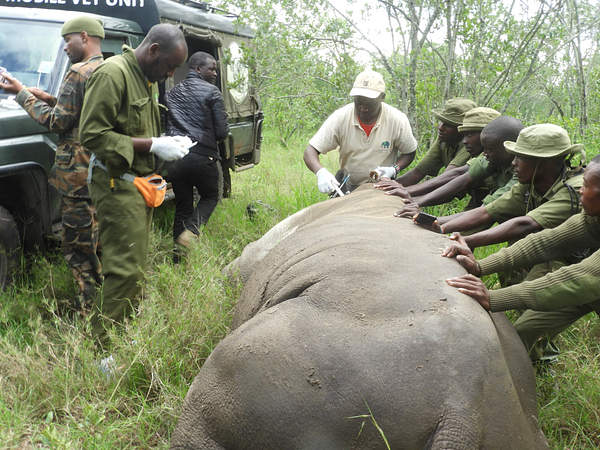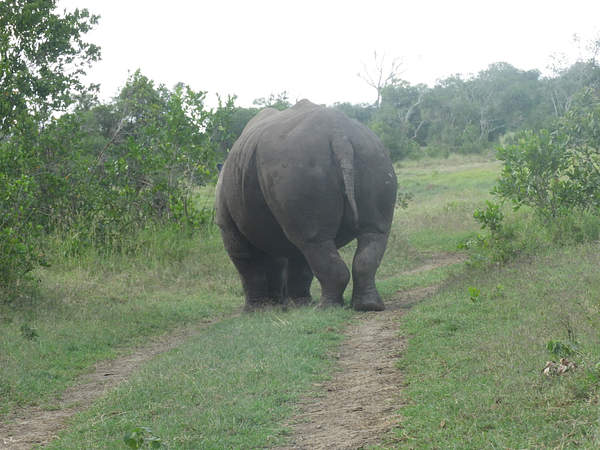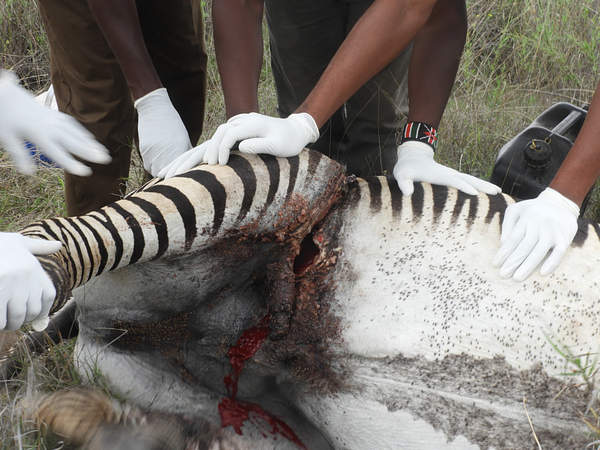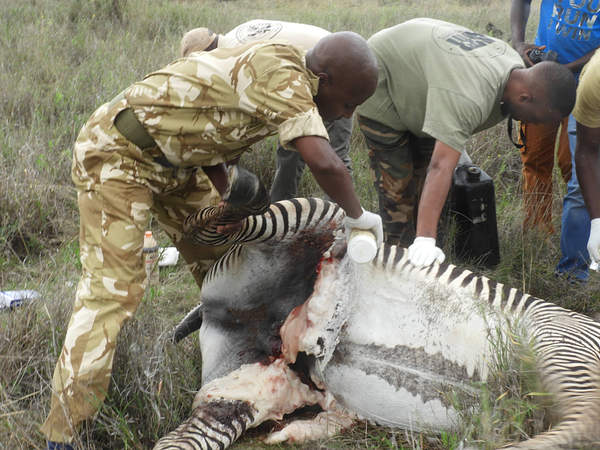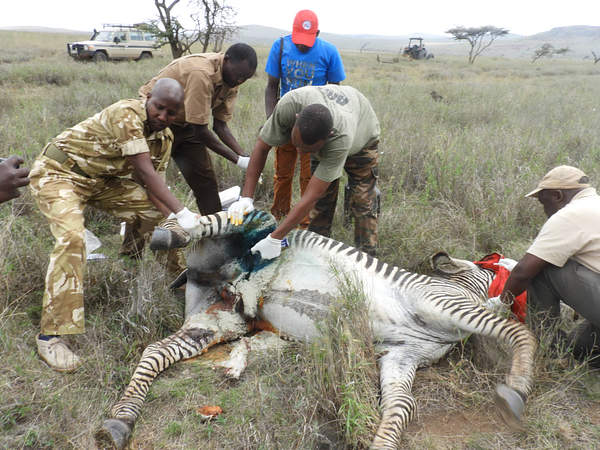The month of December was a season of festivities that had just a few cases reported for veterinary attention since most of the conservancy personnel were on leave. The quick response to reported cases has saved lives of many wildlife species especially the endangered species.
FIELD VETERINARY REPORT FOR MT KENYA & SOUTHERN LAIKIPIA AREA - DECEMBER 2018
Introduction
During the month of December, 2018, the Mt Kenya Veterinary Unit started on a high note and handled a couple of cases including treatment of a wounded adult female Southern White rhino suffering from acute respiratory infection in Olpejeta wildlife conservancy and treatment of an adult male Grevy zebra with quite extensive bite wounds caused by a pride of lions in Lewa Wildlife Conservancy. Below is the detailed report of all the cases attended during the month.
CASE#1 TREATMENT OF A FEMALE WHITE RHINO WITH AN ACUTE RESPIRATORY INFECTION IN OL PEJETA WILDLIFE CONSERVANCY
Species: Southern White rhino (Ceratotherium simum)
Date of clinical intervention: 8th December 2018
Sex: Female
Age: Adult
Location: Ol Pejeta Wildlife Conservancy
History
This was a case of an adult female white rhino in Ol Pejeta Wildlife Conservancy that was reported to be weak with laboured breathing and not feeding well. She also preferred to lie down most of the times and was visibly weak. She was accompanied by another male white rhino and required immediate veterinary attention before her condition deteriorated further.
Immobilization, examination and treatment
The sick rhino was found in fairly thick vegetation and was darted from a vehicle using 4mgs of Etorphine Hcl combined with 60mgs of Azaperone Tartrate. It took about 6 minutes for the drugs to take full effect. To improve the plane of anaesthesia and respiration 10 mg of Butorphanol plus 40mg of Doxapram Hcl was administered immediately through the superficial ear veins. The rhino had laboured breathing, high body temperature and was quite weak. She was still in good body condition and she was heavily pregnant, thought to be in the third trimester of pregnancy. She had acute pneumonia caused by sudden change in weather conditions in the area and low immunity due to her pregnancy. She was treated with very strong long-lasting antibiotics Amoxycillin (Betamox®), Dexamethasone (Colvasone®) and multivitamin injections administered intramuscularly.
Samples collected:
Biological samples including blood, tissue and ticks were collected and preserved appropriately for further laboratory investigation and diagnosis.
Reversal and prognosis
After treatment the rhino was revived from anaesthesia using 24mgs of Diprenorphine Hcl combined with 50mgs of Naltrexone Hcl and released back to the wild. The prognosis for full recovery is quite good after treatment; however she was to be monitored regularly and reported to the veterinary team for further action. She has since made a full recovery and is expected to calve any time soon.
Our mobile vet initiative is in the field every day saving wild lives
CASE#2 TREATMENT OF A WOUNDED MALE GREVY ZEBRA IN LEWA WILDLIFE CONSERVANCY
Date of clinical intervention: 10th December, 2018
Species: Grevy zebra (Equuis grevyi)
Sex: Male
Age: Adult
Location: Lewa Wildlife Conservancy
History
This was a case of an adult male grevy zebra that was attacked by a pride of lions and severely wounded on the perineum, thighs, abdomen and inguinal regions. The wounds were large and had started to become septic and required urgent attention and treatment to avoid developing septicaemia and possible invasion by maggots. The veterinary team responded promptly and treated the animal.
Immobilization, Examination & Treatment
The injured male zebra was found alone in an open field next to the road side, it was quite weak and slow due to intense pain from his injuries, and he was not able to walk properly due to the wounds at the inguinal region rubbing against the body. He was successfully darted on the thigh from a vehicle using 5mgs of Etorphine Hcl combined with 80mgs of Azaperone delivered by Dan-inject remote delivery system. The wounds were already septic and had developed some proud flesh with some loose skin hanging from the wounds. The wounds were cleaned with lots of water, loose hanging skin trimmed off, cauterized and debrided using 10% Hydrogen Peroxide and thereafter covered with Povidone Iodine. Further topical treatments included application of Opticlox® ointment then Oxytetracycline spray and green clay applied to plug the wound and enhance healing process. Further treatments using Procaine Penicillin (Norocillin®) was administered and Dexamethasone (Colvasone®) anti-inflammatory drug administered intramuscularly to enhance wound healing process.
Reversal and prognosis
The anaesthesia was reversed using 18mgs of Diprenorphine Hcl administered through the jugular vein. The zebra rose up after 2 minutes and walked away. He was to be monitored closely and reported to the veterinary team in case he required further treatment. Prognosis for full recovery was fairly good after treatment and the zebra recovered successfully.

Conclusion
The unit has had a very successful month and was able to respond to the few wildlife cases reported during the month despite the busy festive season. Some cases were also reported but the affected animals could not be located for treatment.
Acknowledgement
Report by Dr. Domnic Mijele. The Mt. Kenya & Southern Laikipia Veterinary Unit would wish to acknowledge and appreciate the support and coordination of the David Sheldrick Wildlife Trust (DSWT), KWS and partners for that have all made it possible for many wildlife species to get the much needed veterinary care on prompt basis. Thanks for the continued support in provision of veterinary care to Kenya’s wildlife populations.Thanks to all the wildlife managers, community conservancies, ranchers, rangers and other stakeholders who reported cases of wildlife and assisted the unit in treatment of all wildlife species in Laikipia and Mt. Kenya regions. Thanks a lot for all your efforts.
